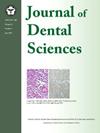碱性成纤维细胞生长因子、牙髓干细胞和牙尖乳头干细胞在牙髓和其他组织/器官修复和再生中的作用
IF 3.1
3区 医学
Q1 DENTISTRY, ORAL SURGERY & MEDICINE
引用次数: 0
摘要
目前,再生和再生疗法的概念已经在临床上应用于牙髓病和牙周病的治疗,以及全身器官和组织的修复和再生。在伤口愈合过程中,发育良好、功能完善的血管网络和血管重建是恢复再生潜能的基本因素。据报道,生长因子、干细胞和支架单独或组合有助于通过细胞移植、细胞归巢或其他技术成功地进行组织修复和工程。在生长因子中,碱性成纤维细胞生长因子(bFGF)已被发现通过FGF受体(fgfr)的差异激活和下游信号通路,调节血管和矿化组织的增殖、干性、迁移和分化为各种细胞类型。除生长因子外,各种牙干细胞被广泛应用于患病或缺失牙髓和牙周组织的再生,并取得了令人满意的结果。来自根尖乳头(SCAPs)和牙髓干细胞(DPSCs)的干细胞,无论有无bFGF,已被证明对血管生成/血运重建、神经元生长、牙髓-牙本质复合物的修复/再生、牙髓外生至关重要,并可能在未来用于治疗各种全身性疾病,如心肌梗死、糖尿病、视网膜病变等。通过细胞移植、细胞归巢或其他技术,在实验动物模型中优化bFGF和SCAPs、DPSCs等牙科干细胞的使用,并最终在临床患者中进行组织和器官再生,还需要进一步的研究。本文章由计算机程序翻译,如有差异,请以英文原文为准。
Roles of basic fibroblast growth factor, stem cells from dental pulp and apical papilla in the repair and regeneration of dental pulp and other tissues/organs
Currently, the concept of regeneration and regenerative therapies are already being applied clinically to treat pulpal and periodontal diseases, as well as to repair and regenerate systemic organs and tissues. During wound healing, well-developed, functional vascular networks and revascularization are fundamental factors in restoring regenerative potential. Growth factors, stem cells, and scaffolds alone or in combination are reported to contribute to successful tissue repair and engineering via cell transplantation, cell homing or other technologies. Among the growth factors, basic fibroblast growth factor (bFGF) has been found to regulate the proliferation, stemness, migration, and differentiation of vascular and mineralized tissues into various cell types through the differential activation of FGF receptors (FGFRs) and downstream signaling pathways. In addition to growth factors, various dental stem cells are widely used for the regeneration of diseased or lost dental pulp and periodontal tissues, yielding promising results. Stem cells from the apical papilla (SCAPs) and dental pulp stem cells (DPSCs), with or without bFGF, have been shown to be crucial for angiogenesis/revascularization, neuronal growth, and the repair/regeneration of the pulpo-dentin complex, apexogenesis, and may potentially be used in the future to treat various systemic diseases such as myocardial infarction, diabetes, retinopathy, and others. Further studies are needed to optimize the use of bFGF and dental stem cells such as SCAPs and DPSCs by using cell transplantation, cell homing or other technologies for tissue and organ regeneration in experimental animal models and, eventually, in clinical patients in the future.
求助全文
通过发布文献求助,成功后即可免费获取论文全文。
去求助
来源期刊

Journal of Dental Sciences
医学-牙科与口腔外科
CiteScore
5.10
自引率
14.30%
发文量
348
审稿时长
6 days
期刊介绍:
he Journal of Dental Sciences (JDS), published quarterly, is the official and open access publication of the Association for Dental Sciences of the Republic of China (ADS-ROC). The precedent journal of the JDS is the Chinese Dental Journal (CDJ) which had already been covered by MEDLINE in 1988. As the CDJ continued to prove its importance in the region, the ADS-ROC decided to move to the international community by publishing an English journal. Hence, the birth of the JDS in 2006. The JDS is indexed in the SCI Expanded since 2008. It is also indexed in Scopus, and EMCare, ScienceDirect, SIIC Data Bases.
The topics covered by the JDS include all fields of basic and clinical dentistry. Some manuscripts focusing on the study of certain endemic diseases such as dental caries and periodontal diseases in particular regions of any country as well as oral pre-cancers, oral cancers, and oral submucous fibrosis related to betel nut chewing habit are also considered for publication. Besides, the JDS also publishes articles about the efficacy of a new treatment modality on oral verrucous hyperplasia or early oral squamous cell carcinoma.
 求助内容:
求助内容: 应助结果提醒方式:
应助结果提醒方式:


